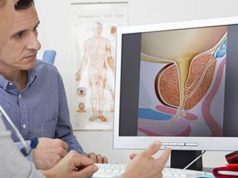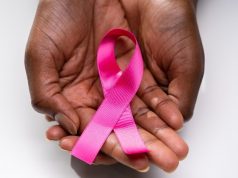Findings at five years show 96 percent disease control rate
By Lori Solomon HealthDay Reporter
MONDAY, Oct. 16, 2023 (HealthDay News) — At five years, five-fraction stereotactic body radiotherapy (SBRT) is noninferior to control radiotherapy for biochemical/clinical failure (BCF) in men with localized prostate cancer (LPCa), according to a study presented at the annual meeting of the American Society for Radiation Oncology (ASTRO), held from Oct. 1 to 4 in San Diego.
Nicholas van As, M.D., from the Royal Marsden NHS Foundation Trust in London, and colleagues randomly assigned (1:1) men with LPCa, stage T1 to T2 to SBRT (433 patients; 36.25 Gy/5f in one to two weeks) or control radiotherapy (CRT; 441 patients; 78 Gy/39f over 7.5 weeks or 62 Gy/20f in four weeks) to the planning target volume.
The researchers found that at a median follow-up of 73.1 months, the five-year BCF event-free rate was 94.6 percent for control radiotherapy and 95.7 percent for the SBRT groups. SBRT was noninferior to CRT (unadjusted hazard ratio, 0.74; 90 percent confidence interval, 0.47 to 1.17; P-value for noninferiority = 0.007). Compared with the control group, the estimated absolute differences in the proportion of patients who were event-free in the SBRT group at five years was 1.36 percent. Radiation Therapy Oncology Group (RTOG) grade 2 or worst (G2+) genitourinary toxicity at five years occurred in 3.2 percent of control patients and 5.5 percent of patients in the SBRT group. For RTOG G2+ gastrointestinal toxicity, there was no significant difference observed between the groups.
“The outcomes for patients in both study arms were better than we expected,” van As said in a statement. “To be able to sit with a patient and say, ‘We can treat you with a low-toxicity treatment in five days, and your chance of keeping the cancer at bay for five years is 96 percent’ — it’s a positive conversation to have.”
Copyright © 2023 HealthDay. All rights reserved.








